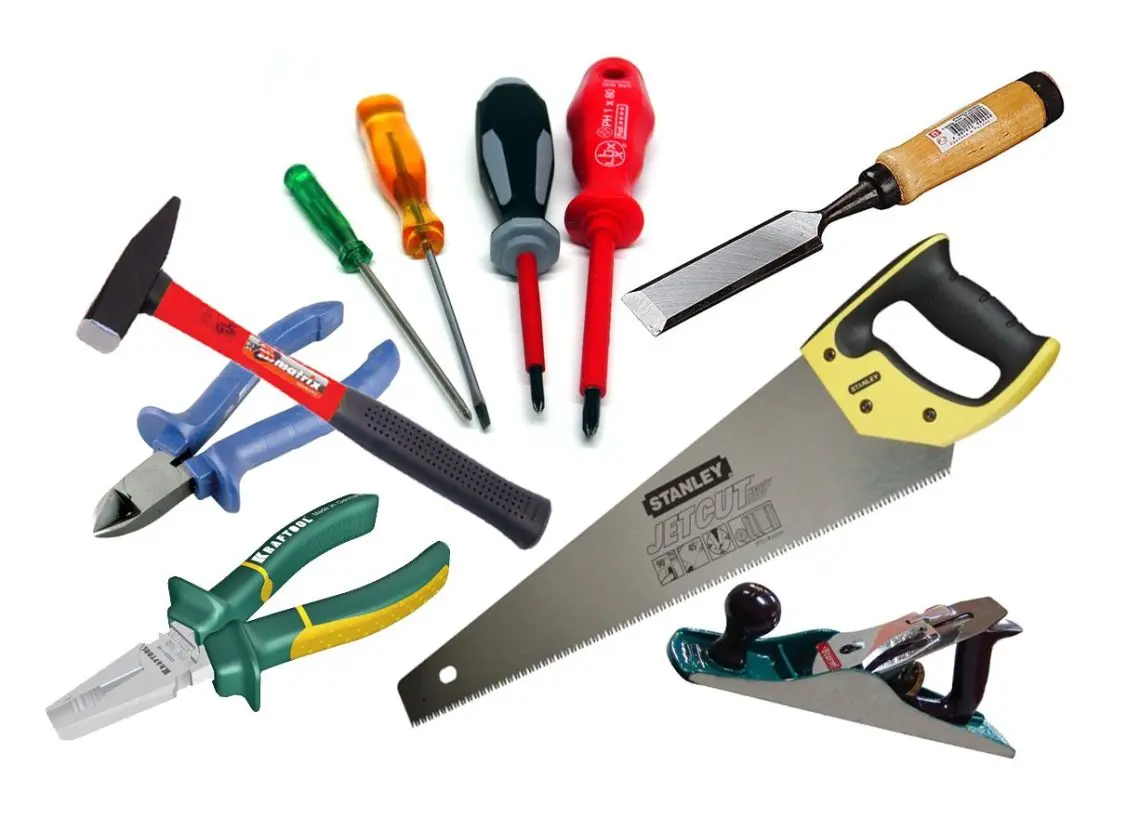
What is a diode?
Content
- How does a diode work?
- What are diodes used for?
- Application of diodes
- History of the diode
- Diode types
- Small signal diode
- Large signal diode
- Zener diode
- light emitting diode (LED)
- DC Diodes
- Schottky diode
- Shockley Diode
- Step recovery diodes
- Tunnel diode
- Varactor diode
- laser diode
- Transient suppression diode
- Gold doped diodes
- Super barrier diodes
- Peltier diode
- crystal diode
- Avalanche Diode
- Silicon Controlled Rectifier
- Vacuum diodes
- PIN-diode
- Point Contact Diode
- Diode Hanna
- Video Tutorial
- Conclusion
A diode is a two-terminal electronic component, restricts the flow current in one direction and allows it to flow freely in the opposite direction. It has many uses in electronic circuits and can be used to build rectifiers, inverters, and generators.
In this article, we will take gaze what is a diode and how does it work. We will also look at some of its common uses in electronic circuits. So let's get started!
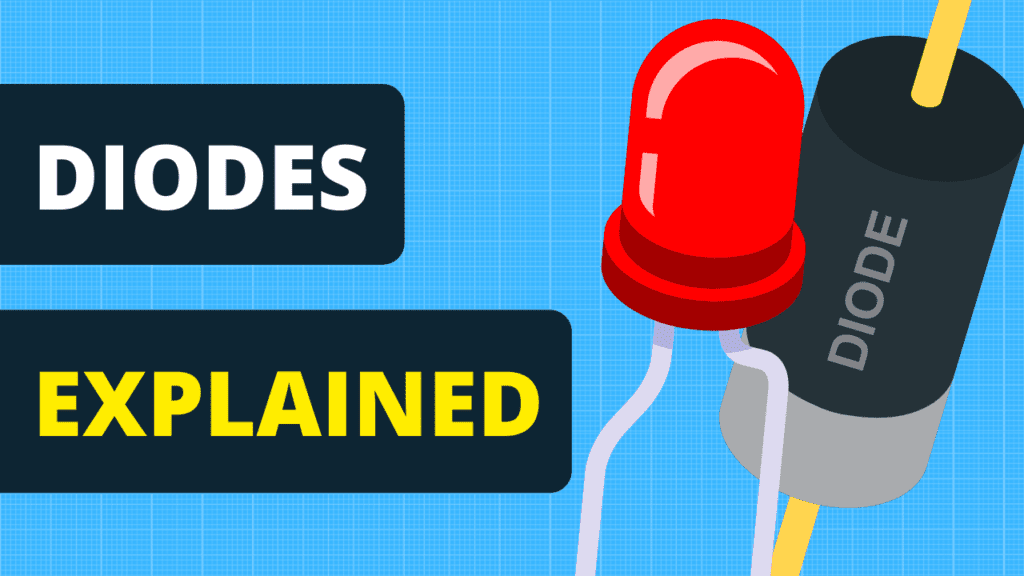
How does a diode work?
A diode is an electronic device that Allows current must flow in one direction. They are usually found in electrical circuits. They operate on the basis of the semiconductor material from which they are made, which can be either N-type or P-type. If the diode is N-type, it will only pass current when voltage is applied in the same direction as the arrow of the diode, while P-type diodes will only pass current when voltage is applied in the opposite direction of its arrow.
The semiconductor material allows current to flow, creatingdepletion zone', this is the region where electrons are forbidden. After voltage is applied, the depletion zone reaches both ends of the diode and allows current to flow through it. This process is called "forward bias».
If voltage is applied to conversely semiconductor material, reverse bias. This will cause the depletion zone to extend from only one end of the terminal and stop the current from flowing. This is because if voltage were applied along the same route as the arrow on a P-type semiconductor, the P-type semiconductor would act like an N-type because it would allow electrons to move in the opposite direction of its arrow.
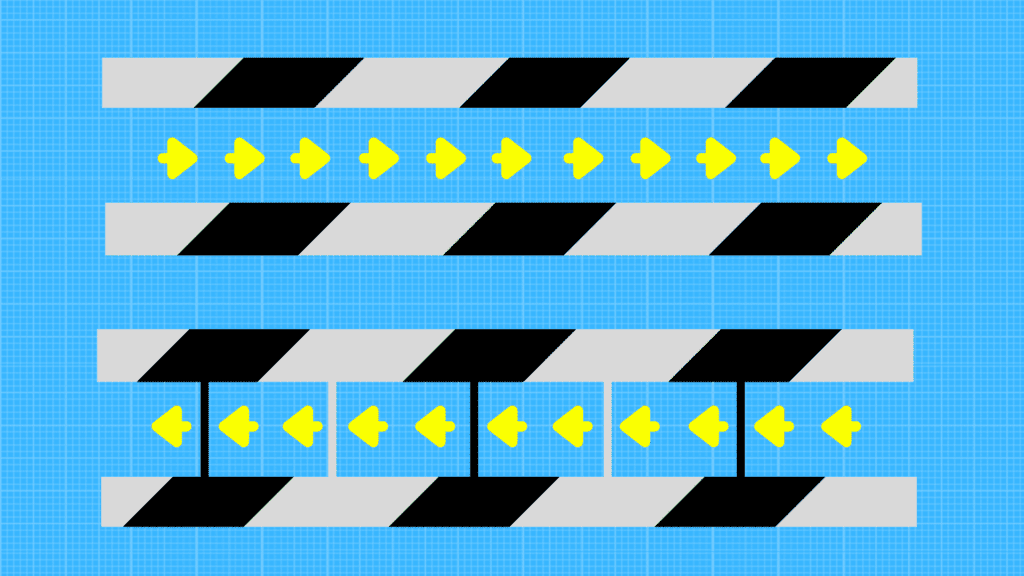
What are diodes used for?
Diodes are used for convert direct current to alternating current, while blocking the reverse conduction of electric charges. This main component can also be found in dimmers, electric motors, and solar panels.
Diodes are used in computers for protection computer electronic components from damage due to power surges. They reduce or block voltage in excess of that required by the machine. It also reduces the computer's power consumption, saving power and reducing heat generated inside the device. Diodes are used in high end appliances such as ovens, dishwashers, microwave ovens and washing machines. They are used in these devices to protect against damage due to power surges caused by power failures.
Application of diodes
- correction
- Like a switch
- Source Isolation Circuit
- As reference voltage
- Frequency mixer
- Reverse current protection
- Reverse polarity protection
- Surge protection
- AM envelope detector or demodulator (diode detector)
- Like a source of light
- In the positive temperature sensor circuit
- In the light sensor circuit
- Solar battery or photovoltaic battery
- Like a clipper
- Like a retainer
History of the diode
The word "diode" comes from Greek the word "diodous" or "diodos". The purpose of a diode is to allow electricity to flow in only one direction. A diode can also be called an electronic valve.
Was found Henry Joseph Round through his experiments with electricity in 1884. These experiments were carried out using a vacuum glass tube, inside of which there were metal electrodes at both ends. The cathode has a plate with a positive charge and the anode has a plate with a negative charge. When current passed through the tube, it would light up, indicating that energy was flowing through the circuit.
Who invented the diode
Although the first semiconductor diode was invented in 1906 by John A. Fleming, it is credited to William Henry Price and Arthur Schuster for independently inventing the device in 1907.

Diode types
- Small signal diode
- Large signal diode
- Zener diode
- light emitting diode (LED)
- DC Diodes
- Schottky diode
- Shockley Diode
- Step recovery diodes
- Tunnel diode
- Varactor diode
- laser diode
- Transient suppression diode
- Gold doped diodes
- Super barrier diodes
- Peltier diode
- crystal diode
- Avalanche Diode
- Silicon Controlled Rectifier
- Vacuum diodes
- PIN-diode
- point of contact
- Diode Hanna
Small signal diode
A small signal diode is a semiconductor device with fast switching capability and low conduction voltage drop. It provides a high degree of protection against damage due to electrostatic discharge.
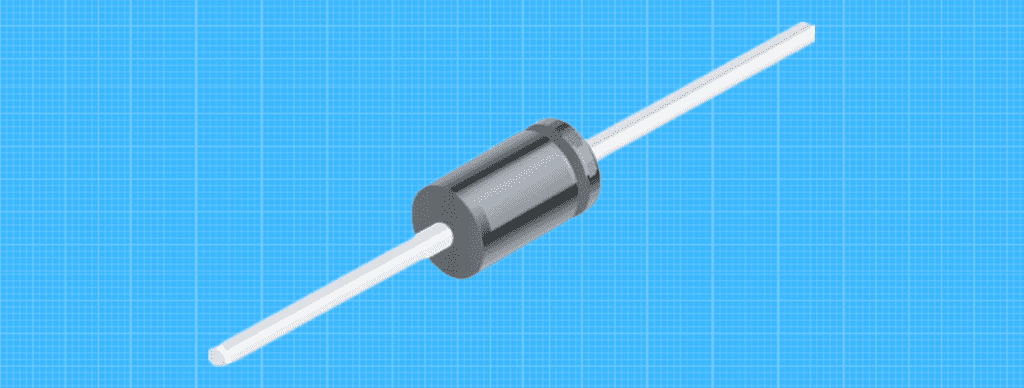
Large signal diode
A large signal diode is a type of diode that transmits signals at a higher power level than a small signal diode. A large signal diode is typically used to convert AC to DC. A large signal diode will transmit the signal with no power loss and is cheaper than an electrolytic capacitor.
A decoupling capacitor is often used in combination with a large signal diode. The use of this device affects the transient response time of the circuit. The decoupling capacitor helps limit voltage fluctuations caused by impedance changes.
Zener diode
A Zener diode is a special type that will only conduct electricity in the area directly under the direct voltage drop. This means that when one terminal of a zener diode is energized, it allows current to move from the other terminal to the energized terminal. It is important that this device is used properly and is grounded, otherwise it may permanently damage your circuit. It is also important that this device is used outdoors, as it will fail if placed in a humid atmosphere.
When enough current is applied to the zener diode, a voltage drop is created. If this voltage reaches or exceeds the breakdown voltage of the machine, then it allows current to flow from one terminal.

light emitting diode (LED)
A light emitting diode (LED) is made of a semiconductor material that emits light when a sufficient amount of electric current is passed through it. One of the most important properties of LEDs is that they convert electrical energy into optical energy very efficiently. LEDs are also used as indicator lights to indicate targets on electronic devices such as computers, clocks, radios, televisions, and so on.
The LED is a prime example of the development of microchip technology and has enabled significant changes in the field of lighting. LEDs use at least two semiconductor layers to generate light, one pn junction to generate carriers (electrons and holes), which are then sent to opposite sides of a "barrier" layer that captures holes on one side and electrons on the other. . The energy of the trapped carriers recombines in a "resonance" known as electroluminescence.
LED is considered to be an efficient type of lighting because it emits little heat along with its light. It has a longer life than incandescent lamps, which can last up to 60 times longer, have higher light output and emit less toxic emissions than traditional fluorescent lamps.
The biggest advantage of LEDs is the fact that they require very little power to operate, depending on the type of LED. It is now possible to use LEDs with power supplies ranging from solar cells to batteries and even alternating current (AC).
There are many different types of LEDs and they come in a variety of colors including red, orange, yellow, green, blue, white, and more. Today, LEDs are available with a luminous flux of 10 to 100 lumens per watt (lm/W), which is almost the same as conventional light sources.

DC Diodes
A constant current diode, or CCD, is a type of voltage regulator diode for power supplies. The main function of the CCD is to reduce output power losses and improve voltage stabilization by reducing its fluctuations when the load changes. The CCD can also be used to adjust DC input power levels and to control DC levels on the output rails.

Schottky diode
Schottky diodes are also called hot carrier diodes.
The Schottky diode was invented by Dr. Walter Schottky in 1926. The invention of the Schottky diode has allowed us to use LEDs (light emitting diodes) as reliable signal sources.
The diode has a very beneficial effect when used in high frequency circuits. The Schottky diode consists mainly of three components; P, N and metal-semiconductor junction. The design of this device is such that a sharp transition is formed inside the solid semiconductor. This allows carriers to transition from semiconductor to metal. In turn, this helps to reduce the forward voltage, which in turn reduces power losses and increases the switching speed of devices that use Schottky diodes by a very large margin.

Shockley Diode
The Shockley diode is a semiconductor device with an asymmetric arrangement of electrodes. The diode will conduct current in one direction and much less if the polarity is reversed. If an external voltage is maintained across the Shockley diode, then it will gradually forward-bias as the applied voltage increases, up to a point called "cut-off voltage" at which there is no appreciable current as all the electrons recombine with the holes. Beyond the cutoff voltage on the graphical representation of the current-voltage characteristic, there is a region of negative resistance. The Shockley will act as an amplifier with negative resistance values in this range.
Shockley's work can best be understood by breaking it down into three parts known as regions, the current in the reverse direction from bottom to top is 0, 1 and 2 respectively.
In region 1, when a positive voltage is applied for forward bias, electrons diffuse into the n-type semiconductor from the p-type material, where a "depletion zone" is formed due to the replacement of majority carriers. The depletion zone is the region where charge carriers are removed when a voltage is applied. The depletion zone around the pn junction prevents current from flowing through the front of the unidirectional device.
When electrons enter the n-side from the p-type side, a "depletion zone" is formed in the transition from bottom to top until the hole current path is blocked. Holes moving from top to bottom recombine with electrons moving from bottom to top. That is, between the depletion zones of the conduction band and the valence band, a “recombination zone” appears, which prevents the further flow of the main carriers through the Shockley diode.
The current flow is now controlled by a single carrier, which is the minority carrier, i.e. electrons in this case for an n-type semiconductor and holes for a p-type material. So we can say that here the flow of current is controlled by the majority carriers (holes and electrons) and the flow of current is independent of the applied voltage as long as there are enough free carriers to conduct.
In region 2, electrons emitted from the depletion zone recombine with holes on the other side and create new majority carriers (electrons in a p-type material for an n-type semiconductor). When these holes enter the depletion zone, they complete the current path through the Shockley diode.
In region 3, when an external voltage is applied for reverse bias, a space charge region or a depletion zone appears in the junction, consisting of both majority and minority carriers. The electron-hole pairs are separated due to the application of a voltage across them, resulting in a drift current through the Shockley. This causes a small amount of current to flow through the Shockley diode.

Step recovery diodes
A step recovery diode (SRD) is a semiconductor device that can provide a fixed, unconditionally stable state of conduction between its anode and cathode. The transition from the off state to the on state can be caused by negative voltage pulses. When on, the SRD behaves like a perfect diode. When off, the SRD is predominantly non-conductive with some leakage current, but generally not enough to cause significant power loss in most applications.
The figure below shows step recovery waveforms for both types of SRDs. The upper curve shows the fast recovery type, which emits a large amount of light when going into the off state. In contrast, the lower curve shows an ultra-fast recovery diode optimized for high speed operation and exhibiting only negligible visible radiation during the on-to-off transition.
To turn on the SRD, the anode voltage must exceed the machine threshold voltage (VT). The SRD will turn off when the anode potential is less than or equal to the cathode potential.

Tunnel diode
A tunnel diode is a form of quantum engineering that takes two pieces of a semiconductor and joins one piece with the other side facing out. The tunnel diode is unique in that the electrons flow through the semiconductor instead of around it. This is one of the main reasons why this type of technique is so unique, because no other form of electron transport up to this point has been able to accomplish such a feat. One of the reasons why tunnel diodes are so popular is that they take up less space than other forms of quantum engineering and can also be used in many applications in many fields.

Varactor diode
A varactor diode is a semiconductor used in a voltage regulated variable capacitance. The varactor diode has two connections, one on the anode side of the PN junction and the other on the cathode side of the PN junction. When you apply a voltage to a varactor, it allows an electric field to form that changes the width of its depletion layer. This will effectively change its capacitance.

laser diode
A laser diode is a semiconductor that emits coherent light, also called laser light. The laser diode emits directed parallel light beams with low divergence. This is in contrast to other light sources, such as conventional LEDs, whose emitted light diverges significantly.
Laser diodes are used for optical storage, laser printers, barcode scanners and fiber optic communications.

Transient suppression diode
A transient voltage suppression (TVS) diode is a diode designed to protect against voltage surges and other types of transients. It is also capable of separating voltage and current to prevent high voltage transients from entering the chip's electronics. The TVS diode will not conduct during normal operation, but will only conduct during the transient. During the electrical transient, the TVS diode can operate with both fast dv/dt spikes and large dv/dt peaks. The device is usually found in the input circuits of microprocessor circuits, where it processes high speed switching signals.

Gold doped diodes
Gold diodes can be found in capacitors, rectifiers, and other devices. These diodes are mainly used in the electronics industry because they don't require a lot of voltage to conduct electricity. Diodes doped with gold can be made from p-type or n-type semiconductor materials. The gold-doped diode conducts electricity more efficiently at high temperatures, especially in n-type diodes.
Gold is not an ideal material for doping semiconductors because gold atoms are too large to easily fit inside semiconductor crystals. This means that usually gold does not diffuse very well into a semiconductor. One way to increase the size of the gold atoms so that they can diffuse is to add silver or indium. The most common method used to dope semiconductors with gold is the use of sodium borohydride, which helps create an alloy of gold and silver within the semiconductor crystal.
Diodes doped with gold are commonly used in high frequency power applications. These diodes help reduce voltage and current by recovering energy from the back EMF of the diode's internal resistance. Gold-doped diodes are used in machines such as resistor networks, lasers, and tunnel diodes.

Super barrier diodes
Super barrier diodes are a type of diode that can be used in high voltage applications. These diodes have low forward voltage at high frequency.
Super barrier diodes are a very versatile type of diode as they can operate over a wide range of frequencies and voltages. They are mainly used in power switching circuits for power distribution systems, rectifiers, motor drive inverters and power supplies.
The superbarrier diode is mainly composed of silicon dioxide with copper added. The superbarrier diode has several design options, including planar germanium superbarrier diode, junction superbarrier diode, and isolating superbarrier diode.

Peltier diode
The Peltier diode is a semiconductor. It can be used to generate an electric current in response to thermal energy. This device is still new and not yet fully understood, but it looks like it could be useful for converting heat into electricity. This can be used for water heaters or even in cars. This would allow the use of heat generated by an internal combustion engine, which is usually wasted energy. It would also allow the engine to run more efficiently, as it would not need to produce as much power (thus using less fuel), but instead a Peltier diode would convert the waste heat into power.
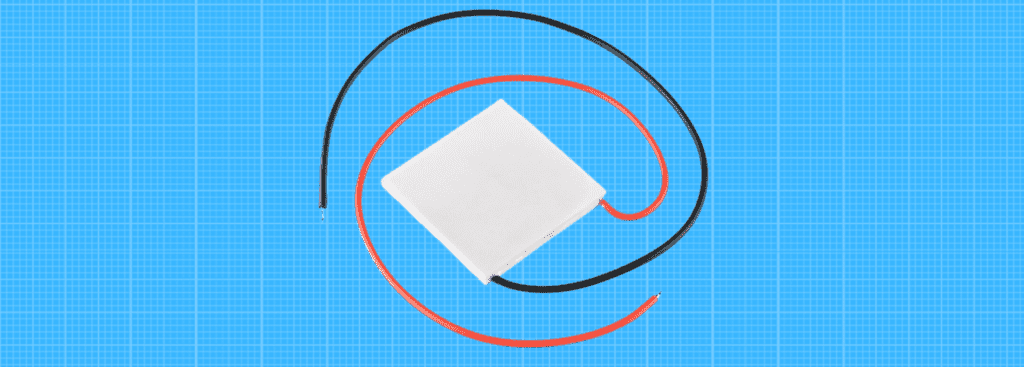
crystal diode
Crystal diodes are commonly used for narrow band filtering, oscillators or voltage controlled amplifiers. The crystal diode is considered a special application of the piezoelectric effect. This process helps generate voltage and current signals using their inherent properties. Crystal diodes are also commonly combined with other circuits that provide amplification or other specialized functions.

Avalanche Diode
An avalanche diode is a semiconductor that generates an avalanche from a single electron from the conduction band to the valence band. It is used as a rectifier in high-voltage DC power circuits, as an infrared radiation detector, and as a photovoltaic machine for ultraviolet radiation. The avalanche effect increases the forward voltage drop across the diode so that it can be made much smaller than the breakdown voltage.

Silicon Controlled Rectifier
The Silicon Controlled Rectifier (SCR) is a three-terminal thyristor. It was designed to act like a switch in microwave ovens to control power. It can be triggered by current or voltage, or both, depending on the gate output setting. When the gate pin is negative, it allows current to flow through the SCR, and when it is positive, it blocks current from flowing through the SCR. The location of the gate pin determines whether current passes or is blocked when it is in place.

Vacuum diodes
Vacuum diodes are another type of diode, but unlike other types, they are used in vacuum tubes to regulate current. Vacuum diodes allow current to flow at a constant voltage, but also have a control grid that changes that voltage. Depending on the voltage in the control grid, the vacuum diode either allows or stops the current. Vacuum diodes are used as amplifiers and oscillators in radio receivers and transmitters. They also serve as rectifiers that convert AC to DC for use by electrical devices.
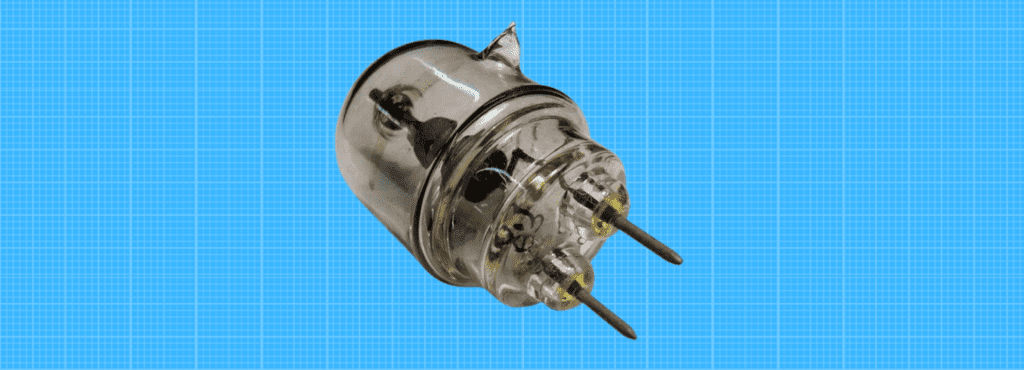
PIN-diode
PIN diodes are a type of pn junction diode. In general, PINs are a semiconductor that exhibits low resistance when a voltage is applied to it. This low resistance will increase as the applied voltage increases. PIN codes have a threshold voltage before they become conductive. Thus, if no negative voltage is applied, the diode will not pass current until it reaches this value. The amount of current flowing through the metal will depend on the potential difference or voltage between both terminals, and there will be no leakage from one terminal to the other.

Point Contact Diode
A point diode is a one-way device capable of improving an RF signal. Point-Contact is also called a non-junction transistor. It consists of two wires attached to a semiconductor material. When these wires touch, a "pinch point" is created where the electrons can cross. This type of diode is used in particular with AM radios and other devices to enable them to detect RF signals.

Diode Hanna
The Gunn diode is a diode consisting of two anti-parallel pn junctions with an asymmetric barrier height. This results in a strong suppression of the flow of electrons in the forward direction, while the current still flows in the reverse direction.
These devices are commonly used as microwave generators. They were invented around 1959 by J. B. Gann and A. S. Newell at the Royal Post Office in the UK, from which the name comes: "Gann" is an abbreviation of their names, and "diode" because they worked on gas devices (Newell previously worked at the Edison Institute of Communications). Bell Laboratories, where he worked on semiconductor devices).
The first large-scale application of Gunn diodes was the first generation of British military UHF radio equipment, which came into use around 1965. Military AM radios also made extensive use of Gunn diodes.
The characteristic of the Gunn diode is that the current is only 10-20% of that of a conventional silicon diode. In addition, the voltage drop across the diode is about 25 times less than a conventional diode, typically 0 mV at room temperature for XNUMX.

Video Tutorial
Conclusion
We hope you have learned what a diode is. If you're interested in learning more about how this amazing component works, check out our articles on the diodes page. We trust that you will apply everything you have learned this time as well.

